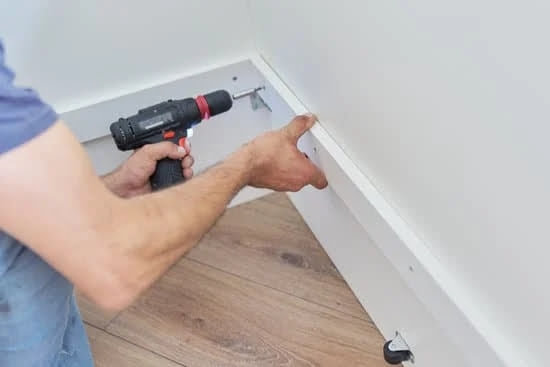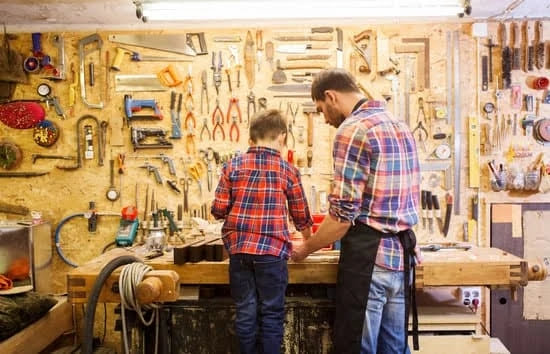Simple woodworking joints are essential elements in any woodworking project, providing the foundation for strong and durable structures. These joints are crucial in ensuring a piece of furniture or structure remains sturdy and long-lasting.
In this article, we will explore the basics of simple woodworking joints, including their importance, common types, step-by-step guides on how to create them, necessary tools needed, tips and tricks for beginners in joinery, advantages and disadvantages of using these joints, and creative projects to try out.
Understanding the fundamental concepts of woodworking joints is key to mastering the craft. Woodworking joints refer to the method by which two pieces of wood are connected together. The quality and strength of a joint determine the overall stability and longevity of a project. By choosing the right joint for your woodworking project, you can ensure that it will withstand the test of time.
Selecting the appropriate type of wood for your woodworking joints is equally important as choosing the right joint itself. Different woods have varying properties such as hardness, flexibility, and grain pattern – all factors that can impact how well a joint will hold up over time. By matching the type of wood to the joint used, you can create a cohesive structure that not only looks great but is also built to last.
Understanding the Basics
Woodworking joints are essential elements in creating sturdy and functional wood pieces. These joints are where two or more pieces of wood are joined together to form a strong bond. Understanding the basics of woodworking joints is crucial for any carpenter, whether they are a beginner or experienced craftsman. By mastering the different types of joints and their uses, woodworkers can elevate the quality and durability of their projects.
To grasp the concept of woodworking joints, it is important to know that each type serves a specific purpose based on the design and function of the project. Some joints are meant for strength and support, while others allow flexibility or movement. Here are some common types of simple woodworking joints:
- Butt Joint: A simple joint where two pieces of wood are joined at right angles.
- Miter Joint: Formed by cutting each piece at an angle, creating a clean and seamless corner.
- Dado Joint: Involves cutting a slot in one piece to fit another piece securely inside.
These basic woodworking joints provide a foundation for more complex joinery techniques. By mastering these simple joints, woodworkers can expand their skills and tackle projects with confidence. Whether you’re building furniture, frames, or small household items, understanding how to create strong and precise joints is key to achieving professional results in your woodworking endeavors.
The Importance of Choosing the Right Wood for Joints
When it comes to creating simple woodworking joints, choosing the right type of wood is crucial to ensure the strength and durability of the final piece. Different types of wood have varying characteristics that can affect how well they hold together when joined. Some woods are harder than others, some are more flexible, and some may be prone to splitting. Understanding these characteristics is key to selecting the appropriate wood for your project.
Hardwoods vs. Softwoods
One of the first things to consider when choosing wood for woodworking joints is whether to use hardwoods or softwoods. Hardwoods such as oak, maple, and walnut are known for their strength and durability, making them ideal for joints that need to bear weight or withstand pressure.
Softwoods like pine, cedar, and fir, on the other hand, are more lightweight and easier to work with but may not be as strong as hardwoods. Consider the intended use of your project when deciding between hardwoods and softwoods.
Grain Direction
Another important factor to consider when selecting wood for joints is the direction of the grain. The grain direction plays a significant role in how well a joint will hold up over time.
For example, using wood with straight grain can provide stability in a joint while avoiding using wood with interlocking or irregular grain patterns can prevent weak spots in the joint. Always take into account how the grain direction will affect the overall strength and longevity of your woodworking joints.
In addition to hardness and grain direction, factors such as moisture content, density, and color should also be considered when choosing wood for simple woodworking joints. By paying attention to these details and selecting the right type of wood for your project, you can ensure that your joints are sturdy, reliable, and aesthetically pleasing in the long run.
Common Types of Simple Woodworking Joints
Woodworking joints are essential components of any woodworking project, as they serve as the connection points between different pieces of wood. By understanding and utilizing simple woodworking joints effectively, you can create strong and visually appealing structures. Some common types of simple woodworking joints include butt joints, lap joints, and miter joints.
Butt joints are one of the simplest types of woodworking joints, where one piece of wood is placed perpendicularly to another and then fastened together using nails, screws, or glue. While butt joints are easy to create, they may not be the strongest option for heavy-duty projects.
Lap joints are similar to butt joints but involve overlapping the ends of two pieces of wood before fastening them together. This type of joint provides more surface area for a stronger bond.
Miter joints are another popular choice for woodworking projects due to their clean and seamless appearance. In a miter joint, each end of the wood is cut at a 45-degree angle before being joined together at a corner. This creates a neat finish that is commonly seen in picture frames and decorative moldings. By mastering these common types of simple woodworking joints, you can enhance the strength and aesthetics of your projects.
| Types | Description |
|---|---|
| Butt Joints | Simplest type where two pieces are joined perpendicular to each other using nails, screws or glue. |
| Lap Joints | Involves overlapping ends of two pieces before fastening them together for a stronger bond. |
| Miter Joints | Both ends are cut at a 45-degree angle and joined together at a corner for clean, seamless appearance. |
Step-by-Step Guide to Creating Strong Joints
Woodworking joints are essential elements in creating strong and durable wood projects. Understanding how to create these joints properly is crucial for the success of any woodworking endeavor. In this step-by-step guide, we will walk you through the process of creating strong joints using simple woodworking techniques.
1. Measure and Mark: The first step in creating strong joints is to measure and mark the pieces of wood that will be joined together. Accurate measurements are crucial for ensuring that the joints fit together properly. Use a pencil and a square to mark where the cuts will be made.
2. Choose the Right Joint: Depending on the project you are working on, select the appropriate type of joint to use. Common simple woodworking joints include butt joints, lap joints, and miter joints. Each type of joint has its own strengths and weaknesses, so choose wisely based on the requirements of your project.
3. Cut with Precision: Once you have measured and marked the pieces of wood, it’s time to make your cuts. Whether you are using a saw or a chisel, make sure to cut along the lines accurately to ensure that the joints fit together snugly. Take your time and pay attention to detail during this step to achieve optimal results.
Creating strong joints in woodworking may seem daunting at first, but with practice and patience, you can master the art of joinery. By following these steps and experimenting with different types of simple woodworking joints, you will be able to create sturdy and beautiful wood projects that stand the test of time.
Tools Needed for Perfecting Simple Woodworking Joints
Woodworking joints are essential in creating strong and durable wood projects. To ensure the success of your woodworking endeavors, it is crucial to have the right tools handy for perfecting simple woodworking joints. Whether you are a novice or an experienced woodworker, having the appropriate tools can make a significant difference in the quality of your joints.
Essential Tools for Simple Woodworking Joints
One of the fundamental tools needed for creating simple woodworking joints is a good quality chisel. Chisels come in various sizes and shapes, allowing you to accurately carve out precise cuts for different types of joints. Additionally, a sharp and properly maintained chisel will help achieve clean and crisp joint edges, resulting in a professional finish.
Another indispensable tool for perfecting woodworking joints is a combination square. This versatile tool allows you to measure, mark, and check for exact angles when cutting or assembling joints. With a combination square, you can ensure that your joints are aligned correctly, leading to tight-fitting connections that enhance the structural integrity of your woodworking projects.
Specialized Tools for Advanced Joinery Techniques
For more intricate woodworking projects that involve complex joinery techniques, specialized tools such as dovetail saws, router planes, and shoulder planes may be required. These tools provide precision and accuracy when creating advanced joints like dovetails, mortise and tenon, or finger joints. Investing in these specialized tools can elevate the quality of your woodworking craftsmanship and expand your capabilities in joining different wood pieces together seamlessly.
Tips and Tricks for Beginners in Woodworking Joinery
For beginners in woodworking joinery, mastering the art of creating simple woodworking joints can be a challenging but rewarding endeavor. Here are some helpful tips and tricks to guide you through the process:
- Start with Basic Joints: As a beginner, it is essential to begin by mastering the basic types of simple woodworking joints before moving on to more complex ones. Some common types of basic joints include butt joints, lap joints, and miter joints.
- Practice Makes Perfect: Like any skill, practice is key to improving your woodworking joinery techniques. Take the time to practice creating different types of joints using scrap wood before working on your actual project.
- Use Proper Measuring and Marking Tools: Accurate measurements and markings are crucial in creating strong and precise woodworking joints. Invest in quality measuring tools such as a combination square and marking gauge to ensure accuracy in your cuts.
As you progress in your woodworking journey, consider experimenting with different types of wood species to see how they affect the strength and appearance of your joints. Additionally, don’t be afraid to seek guidance from experienced woodworkers or online resources for further tips and inspiration. With dedication and practice, you’ll soon be well on your way to mastering the art of creating beautiful and sturdy simple woodworking joints for your projects.
Advantages and Disadvantages of Using Simple Woodworking Joints
Simple woodworking joints offer a range of advantages for both beginner and experienced woodworkers. One of the key benefits of using simple woodworking joints is their ease of construction. Unlike complex joints that require intricate techniques and advanced skills, simple joints can be easily mastered even by those new to woodworking. This simplicity allows for faster completion of projects and reduces the chances of errors in the joint-making process.
Another advantage of simple woodworking joints is their versatility. Basic joints like butt joints, lap joints, and miter joints can be used in a variety of woodworking projects, from furniture making to small crafts. This versatility gives woodworkers the flexibility to experiment with different designs and structures without being limited by the complexity of the joint itself.
However, it is important to note that while simple woodworking joints are easy to create, they may not always provide the same level of strength and durability as more complex joints. In projects that require extra stability or are subjected to heavy loads or stress, such as constructing large furniture pieces or outdoor structures, simple joints may not be sufficient.
In these cases, woodworkers may need to consider incorporating additional reinforcements or using more advanced joinery techniques to ensure the structural integrity of their creations.
Creative Projects to Try Using Basic Woodworking Joints
Woodworking projects can encompass a wide range of creativity and skill level. Whether you are a beginner or a seasoned woodworker, incorporating simple woodworking joints into your projects can open up a world of possibilities. Basic woodworking joints are not only functional but also aesthetically pleasing, adding an extra element to your creations. Here are some creative projects that you can try using basic woodworking joints.
One popular project that often utilizes simple woodworking joints is creating a wooden picture frame. By using basic joints such as butt joints or miter joints, you can easily make a custom-sized frame for your favorite photograph or artwork. This project is a great way to practice your skills in creating clean and precise cuts, as well as ensuring the corners of the frame align perfectly.
Another creative project to try is building a wooden shelf using dado joints or pocket holes for assembly. Wooden shelves are not only practical for storage purposes but also serve as decorative elements in any room. By incorporating basic woodworking joints into the construction of the shelf, you can ensure its strength and durability while showcasing your craftsmanship.
For those looking to add a touch of nature to their home decor, constructing a wooden plant stand using simple woodworking joints like half-lap joints or dowel joints can be a rewarding project. This allows you to display your favorite plants at varying heights, adding visual interest and greenery to any space. With the right tools and techniques, creating these types of projects using simple woodworking joints can be both enjoyable and fulfilling for DIY enthusiasts of all levels.
Conclusion
In conclusion, simple woodworking joints are not only essential for creating sturdy and long-lasting woodwork projects but also contribute to the beauty and functionality of the final piece. By understanding the basics of woodworking joints and choosing the right type of wood for each project, woodworkers can ensure that their creations stand the test of time.
The step-by-step guide provided in this article offers beginners a solid foundation for mastering the art of joinery, allowing them to create professional-quality pieces with ease.
Moreover, utilizing the appropriate tools for perfecting simple woodworking joints is crucial in achieving precision and accuracy in every project. Whether using a chisel, mallet, or specialized joinery tool, having the right equipment can make all the difference in creating seamless joints that enhance both the structural integrity and aesthetic appeal of a piece. Additionally, incorporating tips and tricks shared by experienced woodworkers can further improve one’s skills and confidence in working with wood joinery.
Ultimately, simple woodworking joints offer endless possibilities for creative projects that showcase both skill and artistry. From basic projects like shelves and cabinets to more intricate designs such as tables or chairs, mastering woodworking joinery opens up a world of opportunities for DIY enthusiasts and professional woodworkers alike. The blend of beauty and functionality achieved through well-crafted joints highlights the timeless appeal of handcrafted wooden pieces that can be cherished for generations to come.
Frequently Asked Questions
What Is the Easiest Joint for Woodworking?
The easiest joint for woodworking is often considered to be the butt joint. This joint involves joining two pieces of wood by simply butting them together at a right angle. It is simple to create, but not the strongest or most durable option.
What Are the Basic Woodworking Joints?
Basic woodworking joints include the butt joint, lap joint, dado joint, miter joint, and dovetail joint. Each type of joint has its own characteristics and uses in woodworking projects, depending on factors such as strength, appearance, and ease of construction.
What Is the Simplest Form of Wood Joint?
The simplest form of wood joint is the butt joint. This straightforward joint involves simply placing two pieces of wood together at a right angle without any additional cuts or angles. While it may be easy to make, it is also one of the weakest joints and may require reinforcements for added strength.

Hi everyone! I’m a woodworker and blogger, and this is my woodworking blog. In my blog, I share tips and tricks for woodworkers of all skill levels, as well as project ideas that you can try yourself.





